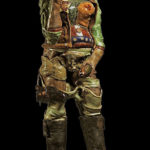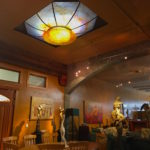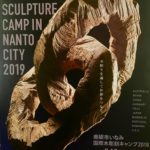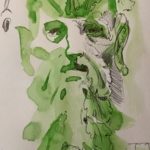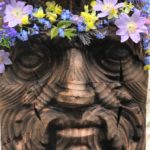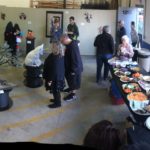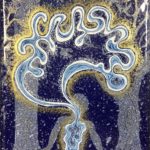Reprint of Zig Lambo’s article from the Art and Museum magazine spring 2019
Sculptor
Bronze Sculptor Shifts Gears to Explore Collaborative Opportunities
Many PNWS members know me as a bronze sculptor involved exclusively with narrative bronzes. But there is another side bubbling up that wants to be more aggressive about other creative forms. Before I went full-tilt into using the figure to tell stories and convey emotions I was producing abstract work in all sorts of mediums […]
Studying Sculpture in Japan at the Inami International Wooden Sculpture Camp
Japanese art has been a big influence on my aesthetic and choice of wood as my primary medium. This August, I will be attending the Inami International Wooden Sculpture Camp in Nanto City, Japan. It will be held at Zuisen-ji, the largest temple in the Hokuriku region, built-in 1390. The vicinity is the workplace of […]
Sculpture Process: The Green Man from Sketch to Finished Sculpture
As a gardener, I’ve been cultivating plants for 60 years. As a sculptor, I’ve been researching the Green Man in books, museums, and churches. A current project which employs the sculpture process combines these interests into designs for a bronze fountain featuring the Green Man. My drawings confirmed an idea I’ve had that sculpture comes […]
Wood Sculpture Techniques at the Portland Japanese Garden
My art tells stories, my collaborator is wood. In my current series, I recycle construction debris, coaxing these manufactured shapes into revealing their natural irregularities. I work with cross-sections of wood and pay special attention to the grain and texture. With certain wood sculpture techniques, the history of the tree becomes an integral part of […]
Sculptors Share Secrets At International Sculpture Day 2019
We’ve yet to have an International Sculpture Day celebration that was not a great success. This one was slimmed down from previous years in that it was to be merely a juried exhibition with a few artists demonstrating techniques. A budget was set for food and the demonstrators paid a small fee to participate. Sculptors […]
“I am Leading this from What I Need as a Sculptor.”
Patrick Gracewood interviews sculptor, Alisa Looney PG. I’m curious about artists who combine different disciplines. We share a love of drawing, dance, and sculpture. I’d like to talk about process. When we are focused on “Making ART” it is easy to ignore our body’s needs. How do you care for your spirit’s needs as a […]
Descartes’s Ipad – When 3D Technology and Sculpture Combine
Some years ago, I read a short blurb about a new 3D technology that could paint an image directly onto the retina. The resolution was poor but there were high hopes that would be improved. I never heard another thing about it, but it got me thinking. Would there come a day when you wouldn’t […]
